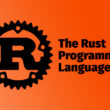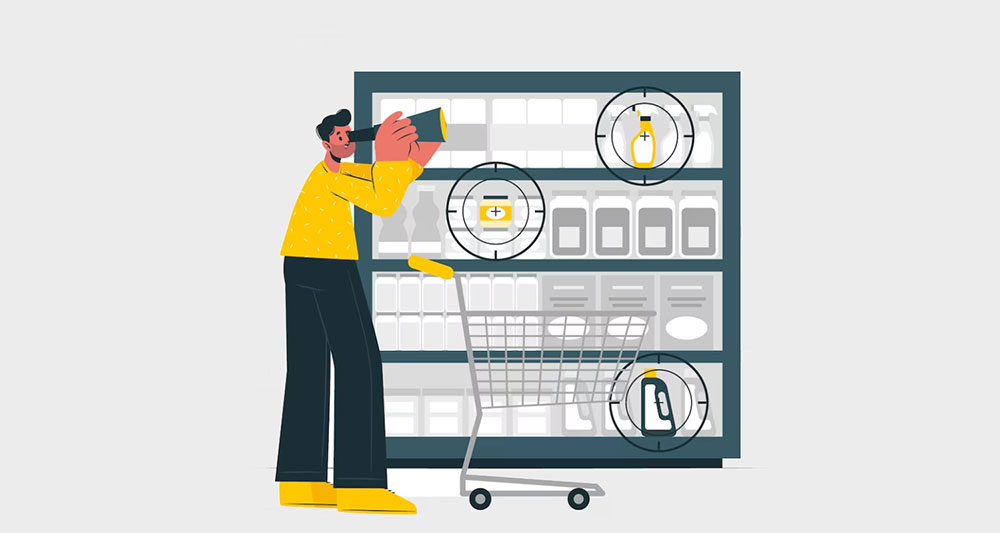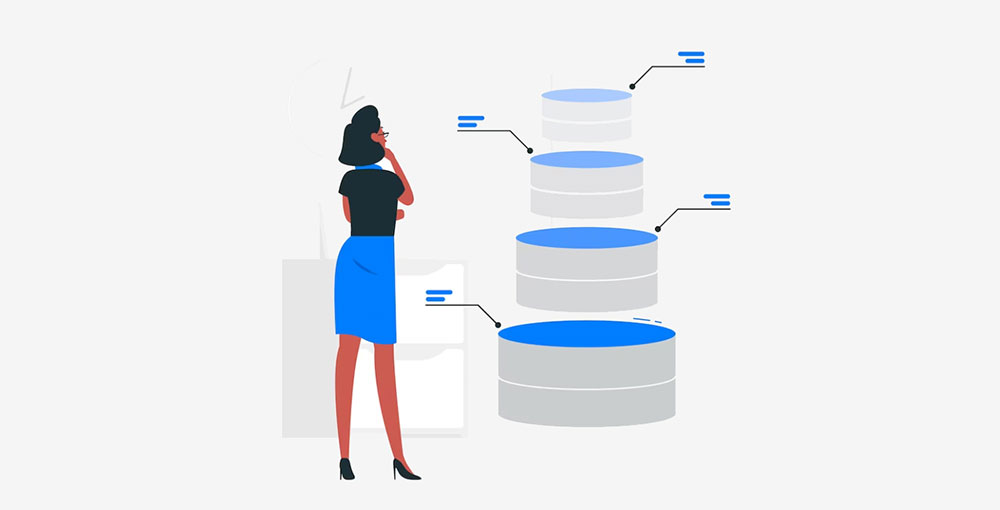Product Growth Strategies for Rapid Product Expansion

Picture this: Your product hits the market. It’s like a tiny seed, brimming with potential. But for that seed to grow into a towering oak, you need strategies—powerful, effective product growth strategies. That’s where the magic sprouts.
In the sprawling digital marketplace, the contest is fierce. You’re up against giants and upstarts, each vying for a slice of the pie.
Your mission? To scale new heights, to turn curious onlookers into loyal patrons, to weave a growth story that rivals fairy tales. This article is the map to your treasure.
Dive in, and you’ll uncover the fundamental growth gears: business development, customer acquisition, and revenue growth.
We’ll dissect each cog, from the spark of viral marketing tactics to the polish of conversion rate optimization, ensuring a ride so thrilling, eyes stay glued, fingers itch to scroll.
By the final punctuation mark, you’ll be armed with actionable insights, ready to steer your product from its humble beginnings to soaring success.
Prepare for an expedition into market expansion, where each paragraph is a step toward a robust bottom line.
Key takeaways
- Fundamentals of Growth Strategy: A product growth strategy is essential, acting as a navigational tool that guides a product from inception to capturing a significant market share. It involves refining the product, attracting and retaining users, and provides a clear direction for investment and resource allocation.
- Product-Led Growth (PLG): PLG is a growth strategy where the product itself drives customer acquisition, conversion, and expansion, ideally through its intuitive design and inherent usefulness, leading to organic growth via word-of-mouth referrals.
- Importance in SaaS: In the Software as a Service (SaaS) sector, PLG has become vital due to its ability to deliver software that captivates users. This strategy benefits from direct user feedback, allowing for continuous product improvement and fostering significant industry growth.
- Survival Through Product Excellence: In competitive markets, the difference between a company’s success and failure can hinge on its product. A product-led growth strategy focuses on creating indispensable products that foster a loyal customer base, a critical factor for business survival and success.
Understanding the Product-Led Growth Strategy
Definition of Product-Led Growth
So what’s Product-Led Growth (PLG)? Well, it’s a growth strategy where the product itself is the primary driver of customer acquisition, conversion, and expansion. It’s about creating a product so good that it sells itself.
When a product is so intuitive, so useful, and just so enjoyable to use, it sparks word-of-mouth referrals and drives growth. You may have seen people raving about products online, telling their friends they’ve got to try this or that. That’s product-led growth in action.
The Future of SaaS and Product-Led Growth
Consider Software as a Service (SaaS). It’s an industry that’s exploded in recent years, right? SaaS is growing rapidly, and it’s turning to PLG to fuel that growth. It’s all about delivering software that users can’t help but fall in love with.
With SaaS, you’ve got a direct line to your users. You can watch how they use your product, learn from it, and then refine it to make it even better. That’s a key part of product-led growth: it’s this constant feedback loop that helps you build something truly awesome.
The Role of Product-Led Growth in Business Survival
Now, business isn’t just about thriving; sometimes it’s about surviving, too. In a competitive marketplace, having a killer product can be the difference between life and death for a company.
When you’ve got a product-led growth strategy, you’re not just creating something people want. You’re creating something they need, something they rely on, something they can’t live without. That makes for a loyal customer base, which is exactly what businesses need to survive and thrive in a cutthroat world.
And that’s why understanding product growth strategies, especially Product-Led Growth, is so crucial. It’s not just a fancy buzzword. It’s the core philosophy that’s driving successful businesses today.
The Challenges of SaaS Business and the Role of Product-Led Growth
Rising Costs of Startups
Let’s face it, starting a business is an expensive affair, more so if we’re talking about a SaaS business. You’ve got to develop your product, build an audience, and then convince them to part with their hard-earned money for your product.
And these costs? They just keep climbing. You’ve got development costs, server costs, marketing costs – it’s like a never-ending list. So, how does PLG help?
Well, remember how we said that a great product sells itself? That’s where the magic of product-led growth comes in. By focusing on creating a standout product, you can turn your customers into your biggest promoters. This could potentially bring in more new users, without you having to shell out big bucks for customer acquisition.
The Preference of Buyers to Self-Educate
People today aren’t waiting around for salespeople to pitch products to them. Nope, they’re out there, educating themselves, doing their research, comparing alternatives, and making informed decisions. They’re the ones in the driver’s seat.
For SaaS businesses, this is a golden opportunity. How so? By crafting a product that’s easy to understand and use, you let your potential customers see firsthand what they stand to gain. That’s product-led growth working its magic. And when customers feel like they’ve made the decision themselves, they’re more likely to stick with it.
The Demand for a Frictionless Product Experience
Remember the last time you tried to use a new app and just couldn’t figure it out? It’s frustrating, right?
Today’s users have little patience for clunky, confusing products. They want something that’s easy to pick up, a product that works seamlessly. They don’t just want to use a product; they want to enjoy using it.
Product-led growth is all about putting the user experience front and center. It’s about creating a product that’s a joy to use. When you nail that, not only will your customers stick around, they’ll also be much more likely to recommend your product to others.
The Risks of Sales-Led Strategy
High Customer Acquisition Costs
Traditional sales-led strategies can be effective, sure. But boy, they can be expensive. Sales teams, marketing budgets, promotional events – the costs can quickly pile up.
But that’s not all. Acquiring customers through sales-led strategies often means each new customer comes with a hefty price tag. If you’re a startup or a smaller business, these costs can be prohibitively high.
On the other hand, a product-led strategy lets your product do the heavy lifting, reducing the reliance on big sales teams and costly marketing campaigns. It’s a far more cost-effective way to grow your customer base.
The Leaky Customer Acquisition Model
Here’s another downside of sales-led strategies. Picture a leaky bucket, water pouring out of holes just as quickly as you’re pouring it in. That’s often what happens with sales-led growth. You bring in new customers, but existing ones slip away.
In contrast, product-led growth helps plug those leaks. It’s about building a product so good that users stick around, reducing customer churn and leading to more sustainable, long-term growth.
The Hindrance to Great Product Development
Here’s a simple truth: if you’re constantly scrambling to bring in new customers, it’s hard to find the time and resources to make your product better.
With a sales-led strategy, you might find yourself in a vicious cycle of always needing to sell more, leaving you little room to focus on improving your product. But with a product-led growth strategy, the product is king. By focusing on making your product better, you attract and retain more users, leading to sustainable growth.
The Working of the Product-Led Growth Model
The Shift from Sales-Led to Product-Led
So you’ve got this shiny sales strategy that’s been chugging along. But you’re tired of the high costs, the leaky bucket, the lack of focus on product development. You’re ready for a change. You’re ready for a product-led growth strategy.
Shifting from a sales-led to a product-led strategy means flipping the script. It means prioritizing the user experience above all else. It means focusing on building a product that users love, one that solves their problems and delivers real value.
It’s a shift that requires a change in mindset, but it’s one that can pay off big time in terms of customer satisfaction, retention, and ultimately, growth.
The Role of Free Trials and Freemium Models
Ever gone to a store and been offered a free sample? It’s a chance to try before you buy. Free trials and freemium models work on the same principle. They allow users to experience the product, understand its value, and decide if it’s a good fit for their needs.
This is a powerful tool in a product-led growth strategy. By letting potential users experience the product directly, it drives home the product’s value and usefulness. And once users see the value in your product, they’re more likely to upgrade to a paid plan or recommend your product to others.
The Importance of User Success
Let’s say your product is a fitness app. It’s not just about whether the app has nice features or a slick interface. At the end of the day, it’s about whether users reach their fitness goals using your app.
User success is paramount in a product-led growth model. It’s about ensuring that users not only enjoy your product but also achieve their desired outcomes through it. This focus on user success fosters a strong sense of loyalty and encourages users to advocate for your product, leading to organic, sustainable growth.
Benefits of Product-Led Growth
Dominant Growth Engine
Look, you’ve probably seen it yourself. Businesses with killer products grow at an astonishing rate. They’ve got users flocking to them, rave reviews, word-of-mouth referrals, all that good stuff.
That’s because a standout product can be a powerful growth engine. A product-led growth strategy, done right, can propel your business forward, turning your product into a dominant force in the market.
Lower Customer Acquisition Costs
Remember those hefty customer acquisition costs we talked about earlier? With a product-led growth strategy, those can be significantly lower.
Think about it. With a great product, your users become your promoters. They tell their friends about your product, they share it on social media, they advocate for it. That’s word-of-mouth marketing, and it’s free.
Higher Valuation of Product-Led Businesses
It’s no secret. Businesses that nail product-led growth often see their valuations soar. Why? Because they’ve got a solid user base, low churn, high user satisfaction, and sustainable growth.
That makes product-led businesses a more attractive proposition for investors. It shows them that you’re not just chasing quick, unsustainable growth. You’re building a business that’s designed to succeed in the long run.
Examples of Successful Product-Led Companies
Calendly
Let’s talk about Calendly, a scheduling app. They’ve made scheduling meetings a breeze, and users love them for it. With a simple, intuitive interface, they’ve turned what was once a chore into a seamless experience.
Slack
Then there’s Slack. It’s become a go-to communication tool for teams around the world. Why? Because it’s a stellar product that addresses a real need. It makes team communication simple, organized, and efficient.
Notion
Notion, the all-in-one workspace app, is another great example. They’ve combined notes, tasks, wikis, and databases into one easy-to-use platform. It’s the simplicity and utility of their product that’s won them a loyal user base.
Typeform
Take a look at Typeform. They’ve taken something as mundane as form creation and turned it into an enjoyable experience. With an engaging, user-friendly design, they’ve redefined what a form can be.
Wave
Wave, a financial software for small businesses, is another standout example. They’ve made accounting and invoicing easier and more accessible, winning over a multitude of small business owners.
Shopify
And, of course, Shopify. They’ve made setting up an online store simple and straightforward, empowering countless entrepreneurs and small businesses.
Each of these companies has mastered the art of product-led growth. They’ve created products that users love, and that’s driven their spectacular growth.
To sum up, a well-executed product-led growth strategy can be a game-changer. It can drive down costs, boost customer loyalty, and power your business forward. If you’re looking to take your product to the next level, it might just be the way to go.
Key Metrics for Product-Led Growth
Acquisition
Let’s start at the top. Acquisition is about how you’re bringing in new users. Are they finding you through search engines, referrals, social media? Understanding where your users are coming from is the first step to refining your product growth strategies.
Activation Rate

Next up is the activation rate. This is all about first impressions. How many of your new users are actually starting to use your product? Are they completing key actions that signify they’re finding value in your product? Keeping track of your activation rate can provide invaluable insights into how well your product resonates with new users.
Customer Lifetime Value (CLV)
Now, we’re playing the long game. Customer Lifetime Value (CLV) tells you how much revenue you can expect from a user over the duration of their relationship with your product. It’s an indicator of how well you’re retaining users and how much they’re willing to spend on your product over time.
Time-to-Value (TTV)
Then there’s Time-to-Value (TTV). How quickly do your users start seeing value from your product? The faster they see value, the more likely they are to stick around.
TTV is a key metric to gauge how effectively your product delivers on its promises.
Free-to-Paid Conversion Rate

Free trials, freemium models, they’re all great for getting users in the door. But the real win is when those users upgrade to a paid plan.
Monitoring your free-to-paid conversion rate can shed light on how successfully your product is convincing users to make that leap.
Expansion Revenue
Expansion revenue is all about growth from within. It’s revenue you earn from existing customers through upsells, cross-sells, or upgrades.
Tracking this metric can show you how well you’re growing your revenue with users who already love your product.
Net Revenue Churn
Remember the leaky bucket we talked about? That’s where net revenue churn comes in. It measures the revenue you’re losing from customers downgrading or leaving, offset by the revenue gained from existing customers through upselling or cross-selling.
Average Revenue Per User (ARPU)
Last but not least, Average Revenue Per User (ARPU). As the name suggests, it’s the average amount of revenue you earn from each user. This metric can help you understand your revenue patterns and make more informed decisions about your product and pricing strategies.
Keeping tabs on these metrics can give you a real edge. They can offer deep insights into your product performance and guide you in refining your product-led growth strategy.
Transitioning to a Product-Led Model
Choosing the Right Product-Led Model
Before we dive in, let’s clear something up. There isn’t just one way to do product-led growth. There are different models to choose from, and the right one depends on your product, your audience, and your business goals.
Whether it’s a freemium model, a free trial, or something else entirely, the key is to choose a model that allows your users to experience the value of your product firsthand.
Steps to Becoming Product-Led
Ready to make the switch to a product-led strategy? It starts with understanding your user. Dive into your user data. Understand who they are, what problems they’re trying to solve, and how your product can help.
Then, focus on delivering a top-notch user experience. Make your product intuitive, easy to use, and enjoyable.
Next, keep refining your product based on user feedback. Stay agile. Be ready to learn and adapt.
And remember, becoming product-led isn’t just a strategy shift; it’s a mindset shift. It’s about putting the user at the center of everything you do.
The Role of a Product-Led Growth Team
So who’s driving this product-led shift? Enter the product-led growth team. This is a cross-functional team that’s laser-focused on user experience and product value.
From product managers and designers to marketers and customer success specialists, every role in a product-led growth team plays a part in ensuring that the product delivers value and fosters user success.
A dedicated product-led growth team can be instrumental in making the shift to a product-led strategy and driving your product growth strategies forward.
FAQ On Product Growth Strategies
What exactly are product growth strategies?
Think of product growth strategies as your playbook. Crafted to snatch up attention in a bustling digital bazaar and clinch that coveted customer loyalty. You’re laying out a master plan to accelerate sales, fan out your product reach, and light a fire under your revenue numbers.
How do I identify the right market for my product?
Unlocking the perfect market means getting cozy with your customer persona. Picture who they are, what they crave. Dive into demographic depths, psychographic pools. It’s detective work—boots on the ground, eyes on the data—until you strike that “aha” moment where product meets purchaser.
Can you differentiate between growth hacking and traditional marketing?
Growth hacking’s like the nimble ninja of the marketing world. It’s all about swift, smart maneuvers—think A/B testing on steroids, viral mechanics in social fibers, and analytics sharper than a samurai’s blade.
Traditional marketing? It’s the measured march of armies, kings, and councils plotting long-term conquests.
What role does competition analysis play in product growth?
It’s massive. Picture yourself mining for gold in your competitor’s backyard. You’re observing their moves, uncovering the gems that work, and steering clear of the pitfalls. It’s about learning the rhythm of the rival dance and choreographing your own routine that’s one step ahead.
What strategies work best for customer retention?
It’s the art of the hold. You want your users sticking like glue. We’re talking personalized experiences, rewards that echo “we value you,” and churning out quality that keeps them coming back for more. Foster that warm, fuzzy bond, and they’ll be yours through thick and thin.
How do pricing models affect product growth?
Your price tag wields more power than Excalibur. Strike the balance—too high, and you scare away the squires; too low, and the coffers won’t fill. Flexibility and savvy understanding of what your knights in shining armor are willing to fork out can win the day.
What is the significance of innovation in product growth?
Innovation’s the lifeblood of growth. Without it, products wither on the vine. It’s about staying fresh, intriguing, a leap ahead of the curve. Serve up that “never seen before,” and watch the market’s eyes light up. Keep the cogs of creation turning, and the growth just keeps churning.
How do I measure the success of my product growth strategies?
Numbers don’t lie. They narrate the saga of your strategy’s triumphs and trials. Keep a hawk’s eye on growth metrics—CLV, ARPU, NPS. They’re not just acronyms; they’re the breadcrumbs that lead you to the gingerbread house of success, or sometimes, the witch to avoid.
In what ways do regulatory considerations impact product growth?
Regulations are the guardrails of the growth highway. They’re there to make sure you’re not playing bumper cars with customer trust or data. Navigate laws like GDPR, and you balance on the tightrope of innovation and compliance, earning that badge of honor—a brand that stands for integrity.
How should I adjust my product growth strategies in response to market changes?
Market shifts? Think nimble, think quick, pivot foot ready. It’s like jazz—improvise with flair but keep the tune. Evaluate new channels, tweak offerings, maybe shuffle the features deck. Stay alert, ears to the ground, because agility plus insight equals a recipe for enduring—no, flourishing—growth.
Conclusion
Well, we’ve journeyed through the tangled thicket of product growth strategies, from the fledgling flutter of a startup’s wings to the full-flight whirl of expanding empires. It’s a saga, every chapter etched with its brand of cunning and craft.
- We dissected growth hacking; it’s no mere buzzword but a scalpel for the lean, keen market surgeon.
- We pondered pricing models, the veritable pendulum swinging between profit peaks and customer appeal valleys.
- Customer retention strategies, those heartstrings of business, pulling loyal clients closer with each harmonious chord.
- And let’s not forget that powerhouse of progress—the iterative innovation engine.
In the grand chess game of market mastery, each move we’ve covered here isn’t just a strategy; it’s a legacy in the making. Your brand’s knight riding forth into the dawn, armed with a challengers’ worth of winning wisdom. Now, go-ahead—your board awaits, that first play whispering of triumphs to come.
- Golang’s Growing Use: What is Golang Used For? - May 5, 2024
- Design Digitally: Graphic Design Apps Like Adobe Illustrator - May 4, 2024
- Unlocking Efficiency: Top CSS Generators To Try - May 4, 2024








